Samurai Swords Exhibit
Japanese samurai swords selected from the extensive collection of David E. J. Pepin, of Grant Park, Illinois, was exhibited at the Navy Memorial Museum (now National Museum of the U.S. Navy) in the historic Washington Navy Yard from November 15, 1977 to January 15, 1978.
For this exhibit, Mr. David E. J. Pepin singled out thirty-seven of the finest examples from his collection of more than three hundred Japanese weapons.
This exhibit included a variety of long and short blades and their accessories, representing nine centuries of Japanese skill in fashioning swords that are also works of art.
The Director of the museum at that time was Captain Roger Pineau.
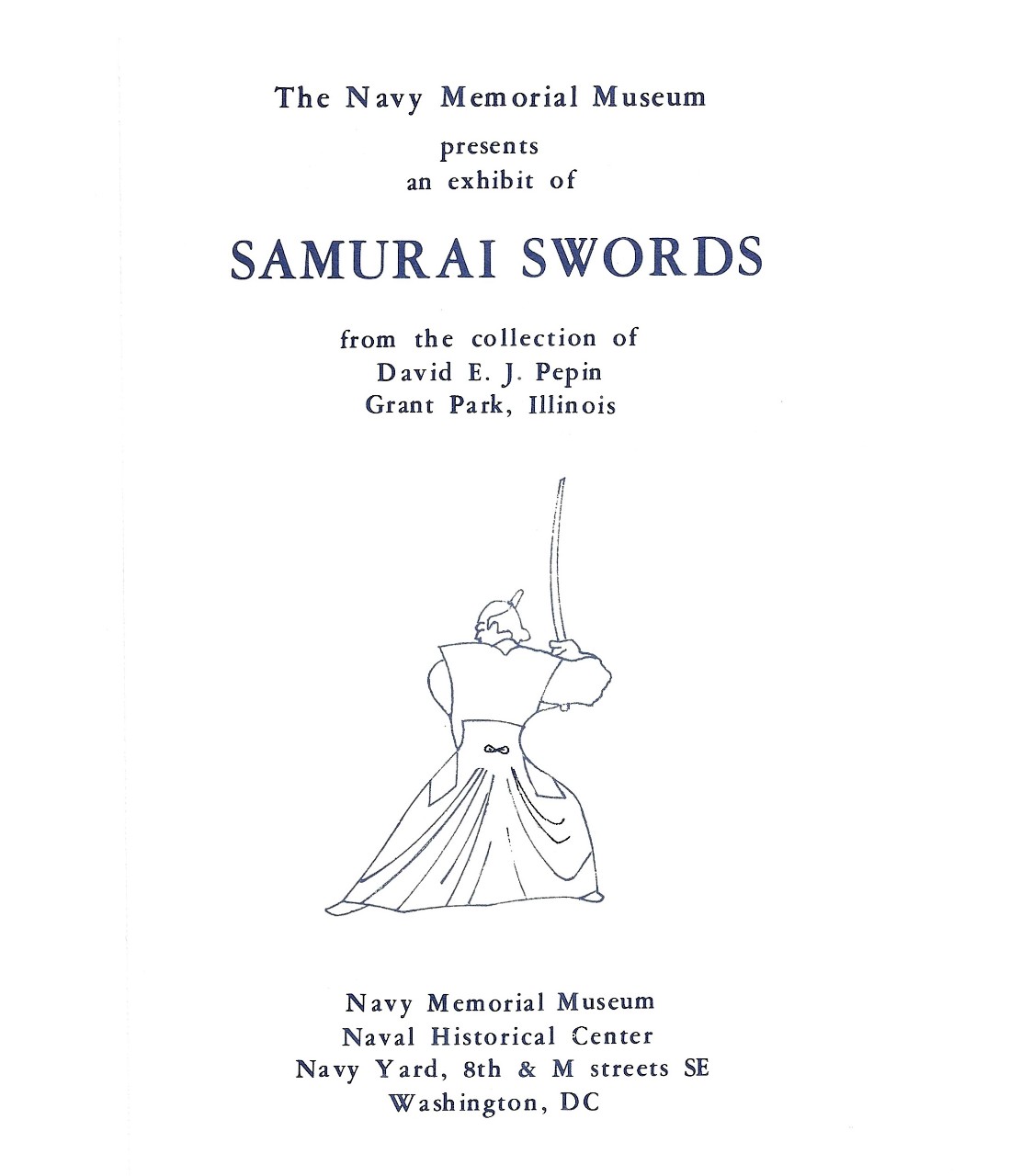
Samurai Swords Exhibit Pamphlet designed and printed by Navy Memorial Museum staff for the exhibit. National Museum of the U.S. Navy Archives Collection.
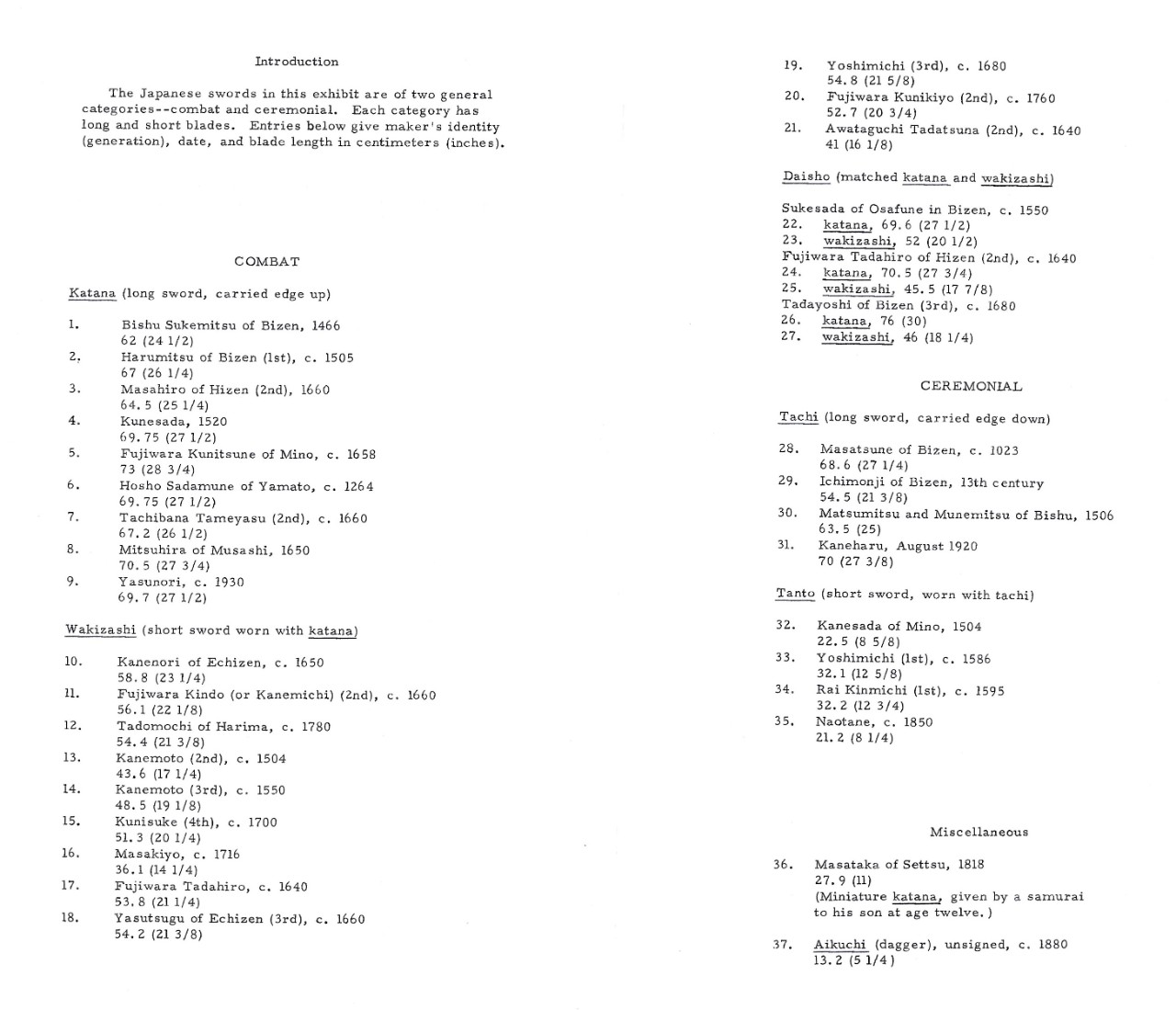
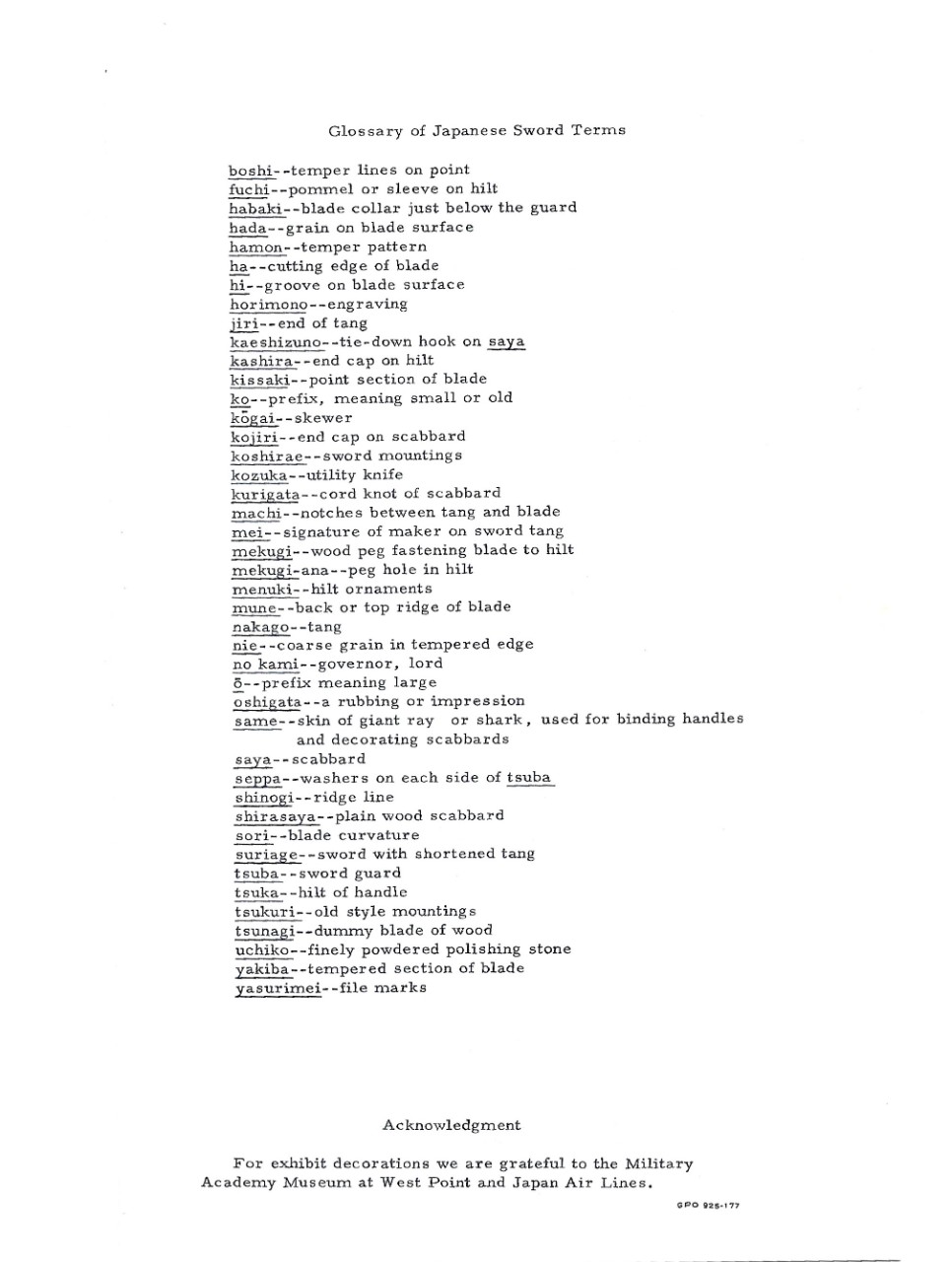
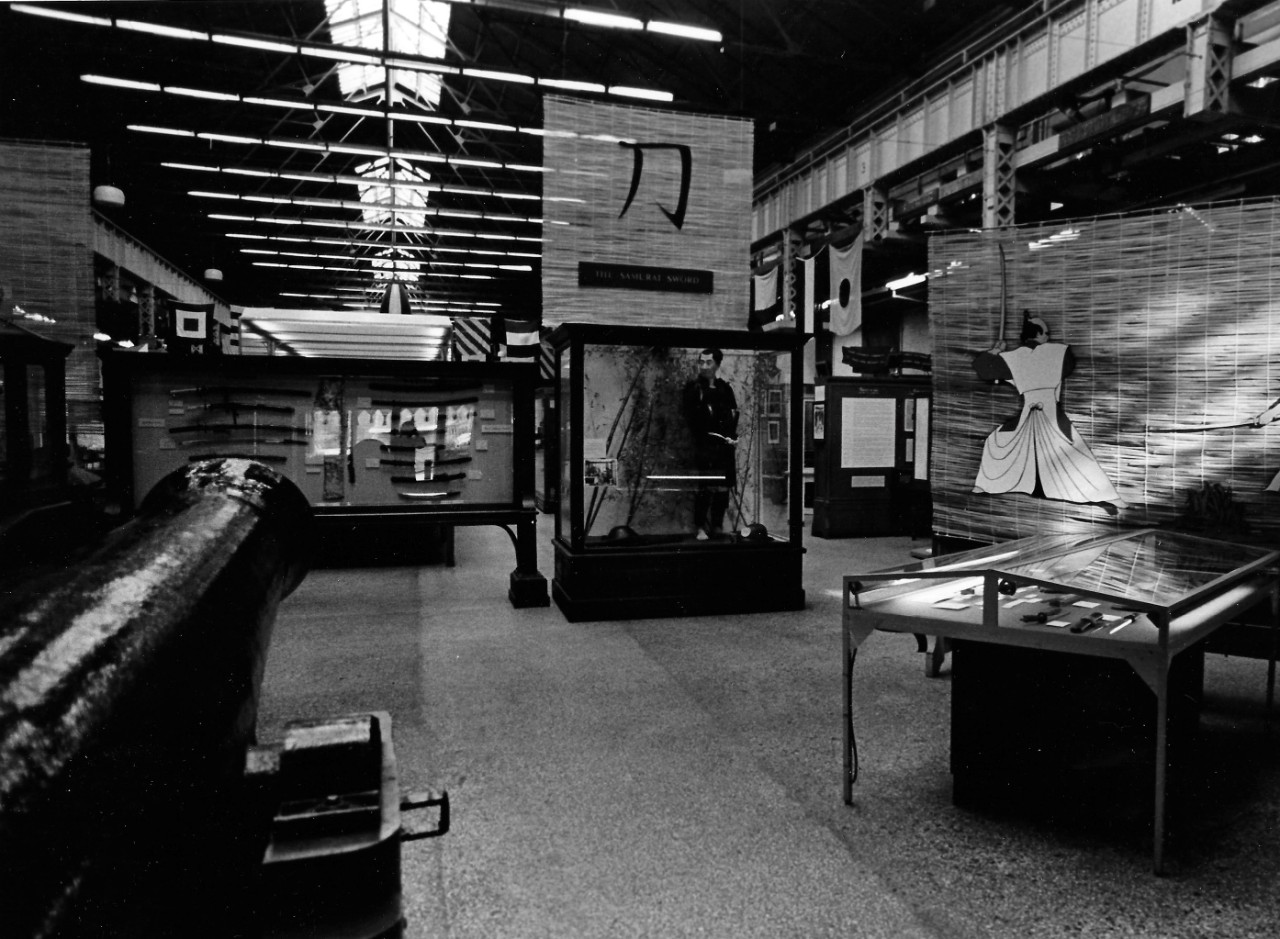
Samurai Swords Exhibit. The Navy Memorial Museum (now National Museum of the Navy). Exhibit was held from November 1977 to January 1978 and displayed thirty-seven swords from the collection of David E. J. Pepin. National Museum of the U.S. Navy Photograph, NMUSN-Photo-9
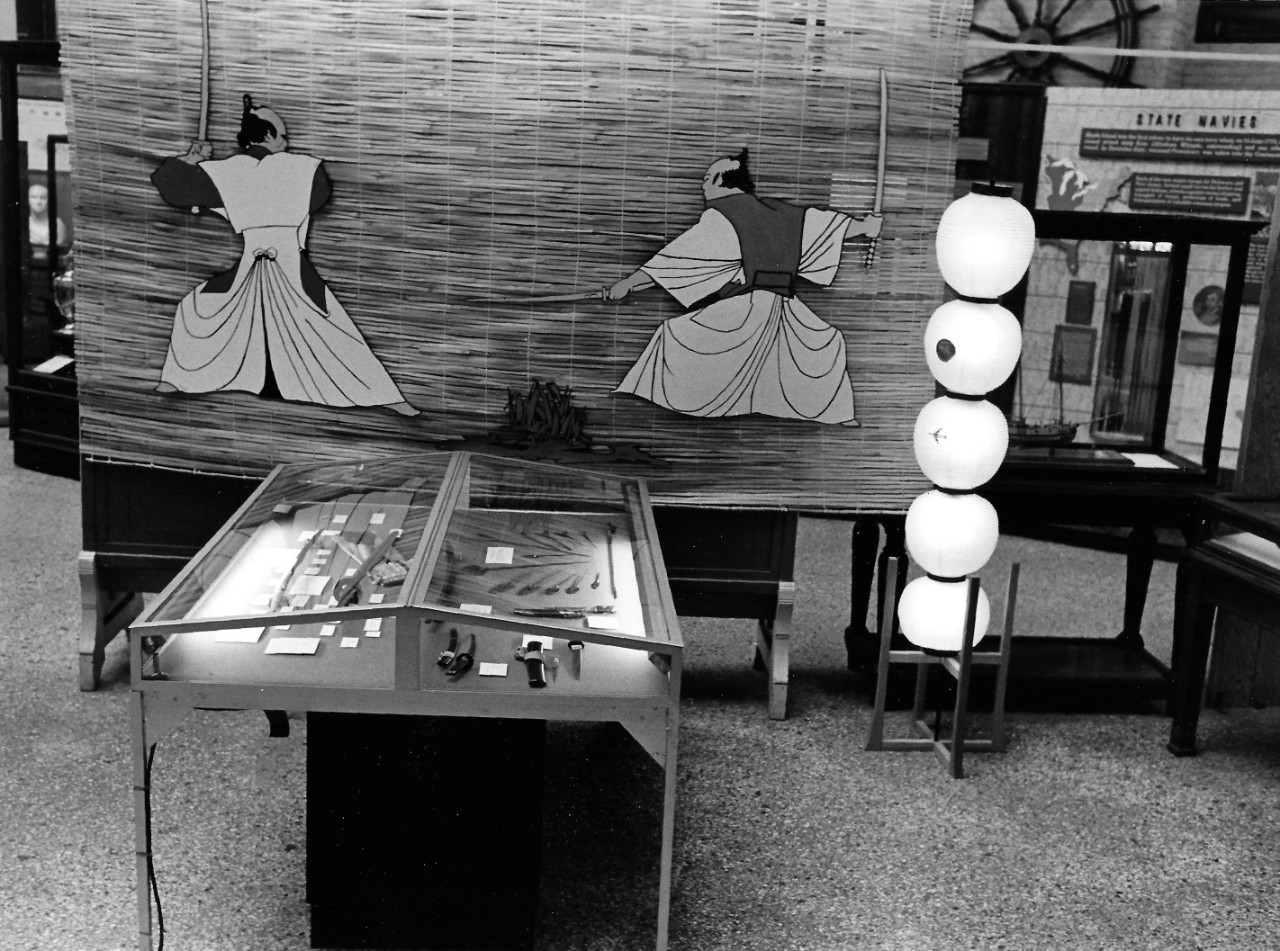
Samurai Swords Exhibit. The Navy Memorial Museum (now National Museum of the Navy). Exhibit was held from November 1977 to January 1978 and displayed thirty-seven swords from the collection of David E. J. Pepin. National Museum of the U.S. Navy Photograph, NMUSN-Photo-10.
The Japanese Sword: Weapon and Work of Art by David E. J. Pepin, June 1977.
The Japanese sword, more commonly known as the Samurai sword was a superb weapon. Its unique edge-tempering (compared to the full-blade tempering of the famous Toledo and Damascus swords of Europe) allowed a degree of hardness and razor-sharpness impossible to attain in European swords without danger of brittleness and breakage. The fear and respect with the Japanese warrior and his sword inspired among Oriental foes is recorded in many contemporary accounts. But beyond its quality as a weapon, the Japanese sword is important as one of history’s finest expressions of the metalworker’s art.
The art of sword making required high technical knowledge, great patience, persistence and a true religious devotion. The greatest Japanese swordsmiths led a religious form of life, abstaining from all excesses, and accompanying each step of the work with prayer and ritual.
The actual forging of the blade was a complex process. Strips of two different grades of steel, or of iron and steel, were welded together by the smith’s hammer. The resulting billet of metal was then folded upon itself and hammered out again to its original length and thickness. The process was repeated many times, until the final blade consisted of many thin, tightly-welded layers of the original metal. When the forging was completed, the swordsmith used file and scraping knife to give final shape and finish to the blade and tang.
As a result of the forging and finishing processes, the untampered portion of the blade of the Japanese sword frequently shows a unique patterning of the metal similar to a wood grain.
The most critical of all the sword making processes was the tempering of the edge. The smith began by coating the entire blade with a thin layer of a clay, send and powdered-charcoal mixture. Then, using a sharp bamboo stick, he inscribed a line of short distance back from the edge. The character of this line – straight, wavy or irregular – determined the distinctive pattern of the tempered portion of the blade. Variations in shape of the tempering line are among the fine points of classification used by Japanese sword experts.
Material between the scribed lines and the edge was removed and the rest of the coating allowed to dry. Then, the swordsmith heated the entire edge over his pine charcoal fire until the proper temperature (judged by the color of the heated metal) was reached. Finally, the glowing blade was plunged into a tank of warm water.
There are four basic types of Japanese sword; two of them short (under 24 inches) and two of them long (over 24 inches) in blade length. The Samurai warrior always carried a pair of sheathed swords – one long and one short – with the types carried depending on the occasion.
When clad in armor or in formal court dress, the Samurai wore a long sword called the TACHI, slung edge-downward from his girdle or sash. The matching short sword, usually less than 12 inches in length, was a TANTO. It was worn thrust through the girdle and secured by a cord, and like the TACHI, the TANTO was word edge downward.
In ordinary dress, the Samurai’s long sword was the KATANA. This sword, often nearly three feet in length, was thrust through the girdle, edge-upward. The KATANA was normally considered the fighting sword. Its companion was the WAKIZASHI, a sword between 12 and 12 inches in blade length. It too, was thrust edge-upward through the girdle.
Many Japanese swords were decorated with engraving of inlay work on the blade, although the major decorative work was usually reserved for the TSUBA, or guard, the FUCHI, a collar encircling the hilt at the guard end; and the KISHIRA or pommel-cap. These were often embellished with high-relief carving, engraving, etching, piercing, inlay work, incrustation with precious metals, or a combination of these techniques. The scabbard (SAVA) was usually finished with lacquer, and had decorated metal fittings.
Finishing of the sword hilt (TSUKA) begins with a covering of the white pebbled skin of a ray fish. Then, flat silk braid is wrapped over the hilt in a pattern which leaves a row of lozenge-shaped openings on either side, exposing the white ray skin.
Identification of swords requires a removal of the TSUKA, which may be accomplished by carefully forcing out the single tapered wooden peg (MEKUGI) which fastens to the tang. The TSUKA may then be slid off the tank, revealing the maker’s signature and other identifying marks incised in the metal. The signature often consists of the maker’s name, his titles, and lace at which the sword was made. The date of the manufacture, when shown, is usually found on the other side of the tang. Certain patterns of file marks on the tang are also distinctive, aiding the expert in determining the authenticity and dating of the sword.
Monetary value of the Japanese sword obviously depends upon many factors, which as; age, condition, maker and historical associations, but we can all appreciate the value of any of these swords as magnificent examples of the artistic ability and dedication of the Japanese swordsmith.
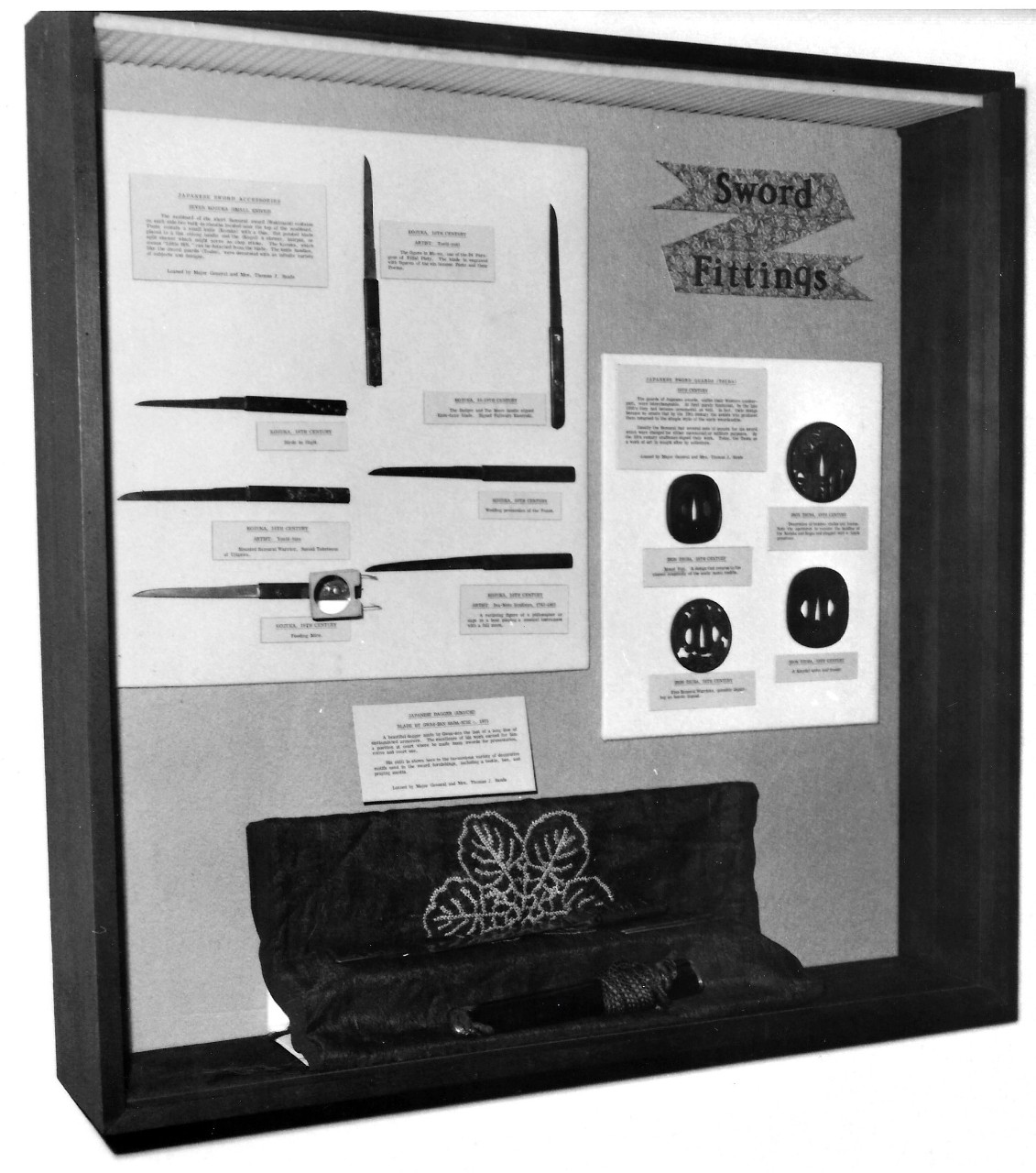
Samurai Swords Exhibit. The Navy Memorial Museum (now National Museum of the Navy). Shown: Sword and Fittings exhibit case. Exhibit was held from November 1977 to January 1978 and displayed thirty-seven swords from the collection of David E. J. Pepin. National Museum of the U.S. Navy Photograph, NMUSN-Photo-11.
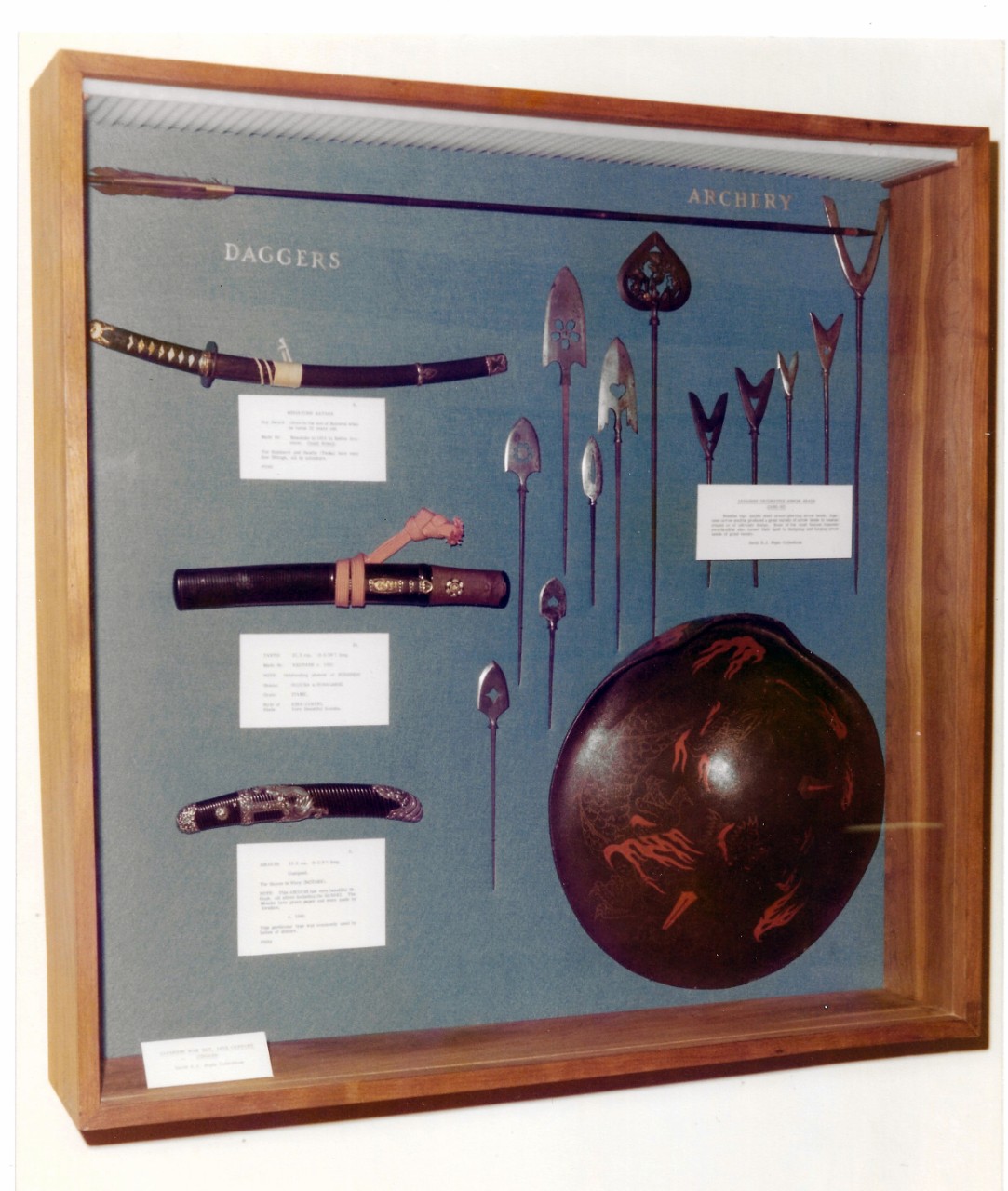
Samurai Swords Exhibit. The Navy Memorial Museum (now National Museum of the Navy). Shown: Daggers and Archery exhibit case. Exhibit was held from November 1977 to January 1978 and displayed thirty-seven swords from the collection of David E. J. Pepin. National Museum of the U.S. Navy Photograph, NMUSN-Photo-12.
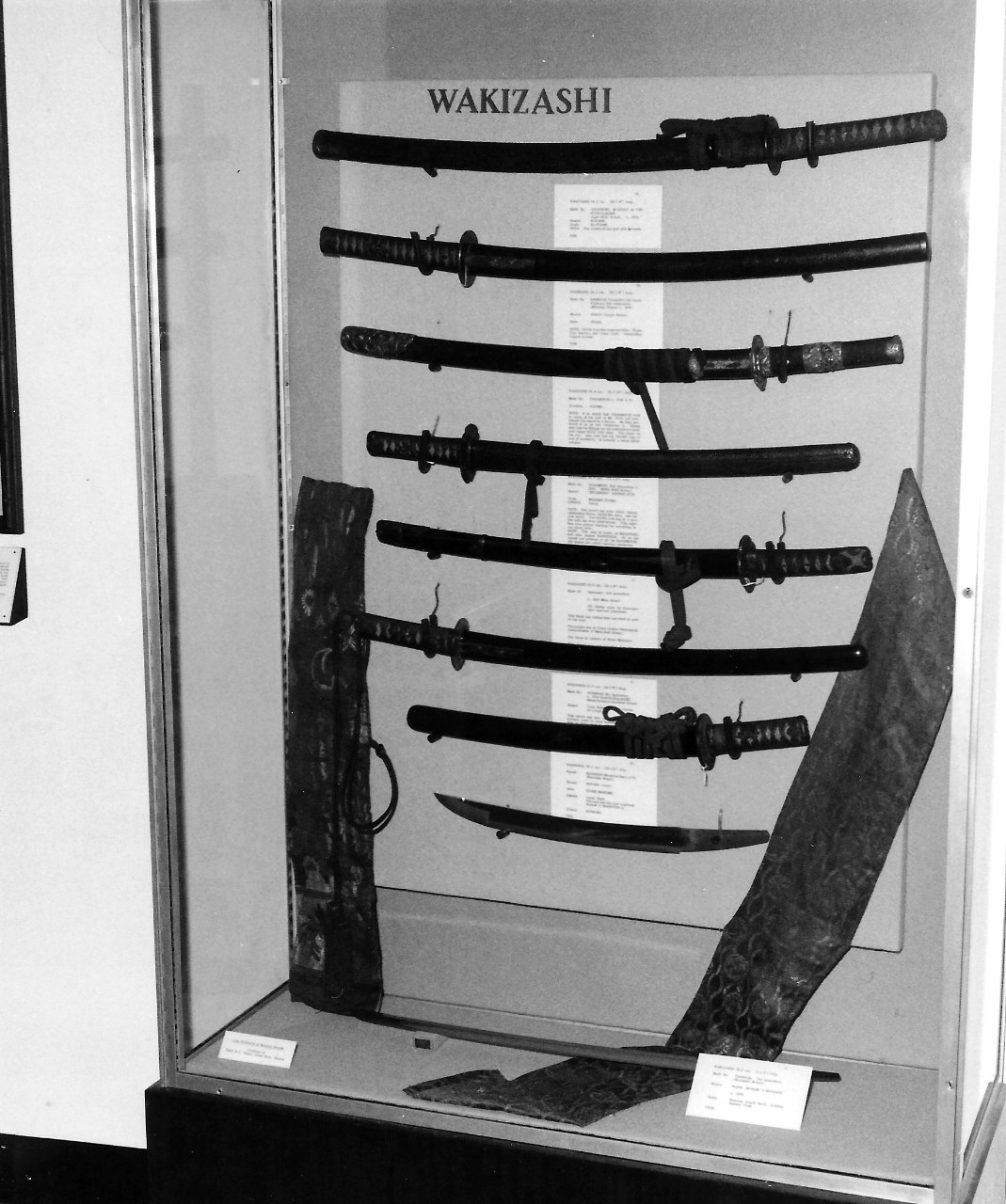
Samurai Swords Exhibit. The Navy Memorial Museum (now National Museum of the Navy). Shown: Wakizashi exhibit case. Exhibit was held from November 1977 to January 1978 and displayed thirty-seven swords from the collection of David E. J. Pepin. National Museum of the U.S. Navy Photograph, NMUSN-Photo-13.
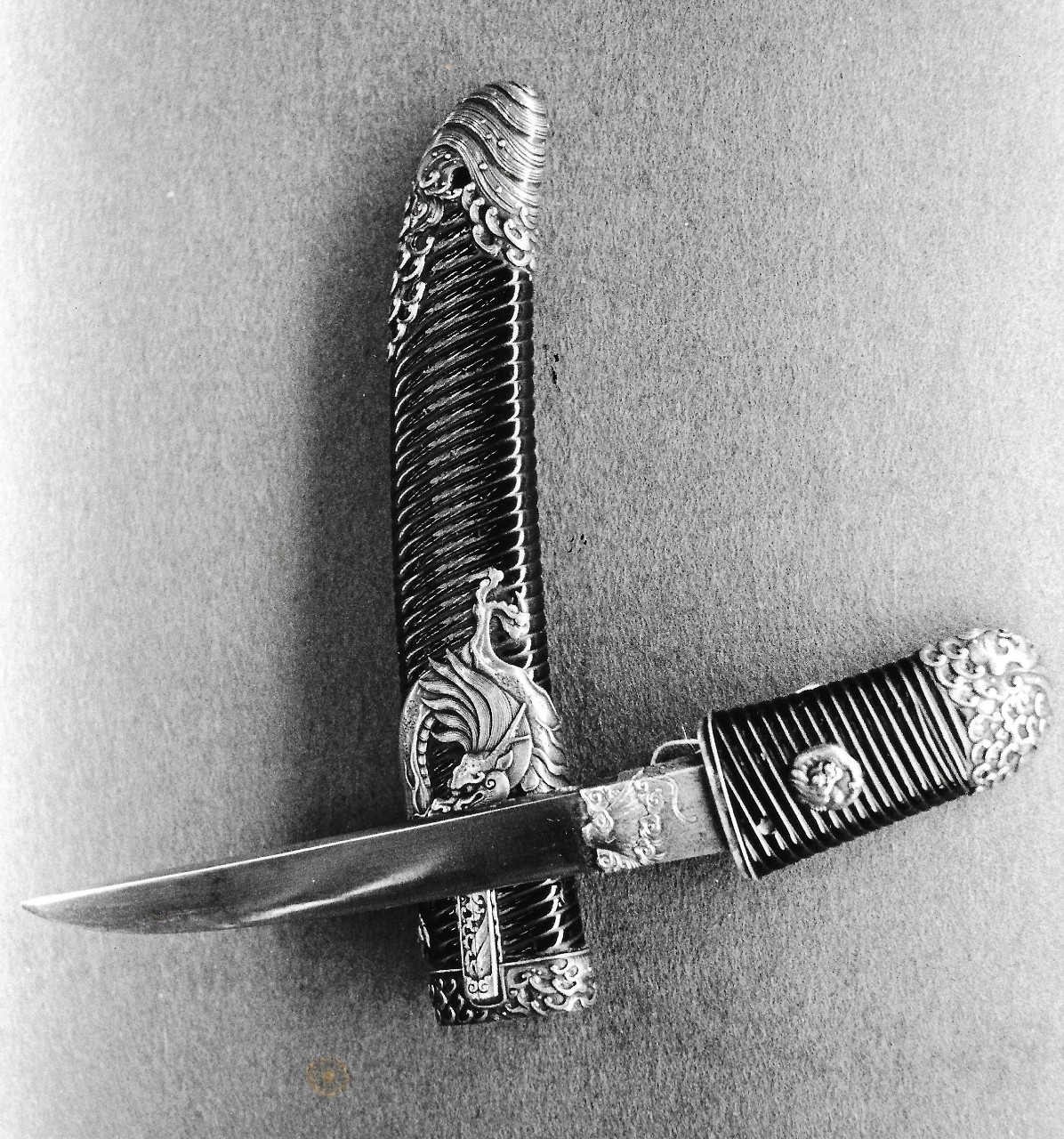
Samurai Swords Exhibit. The Navy Memorial Museum (now National Museum of the Navy). Shown: Aikuchi (dagger). Exhibit was held from November 1977 to January 1978 and displayed thirty-seven swords from the collection of David E. J. Pepin. National Museum of the U.S. Navy Photograph, NMUSN-Photo-14.



